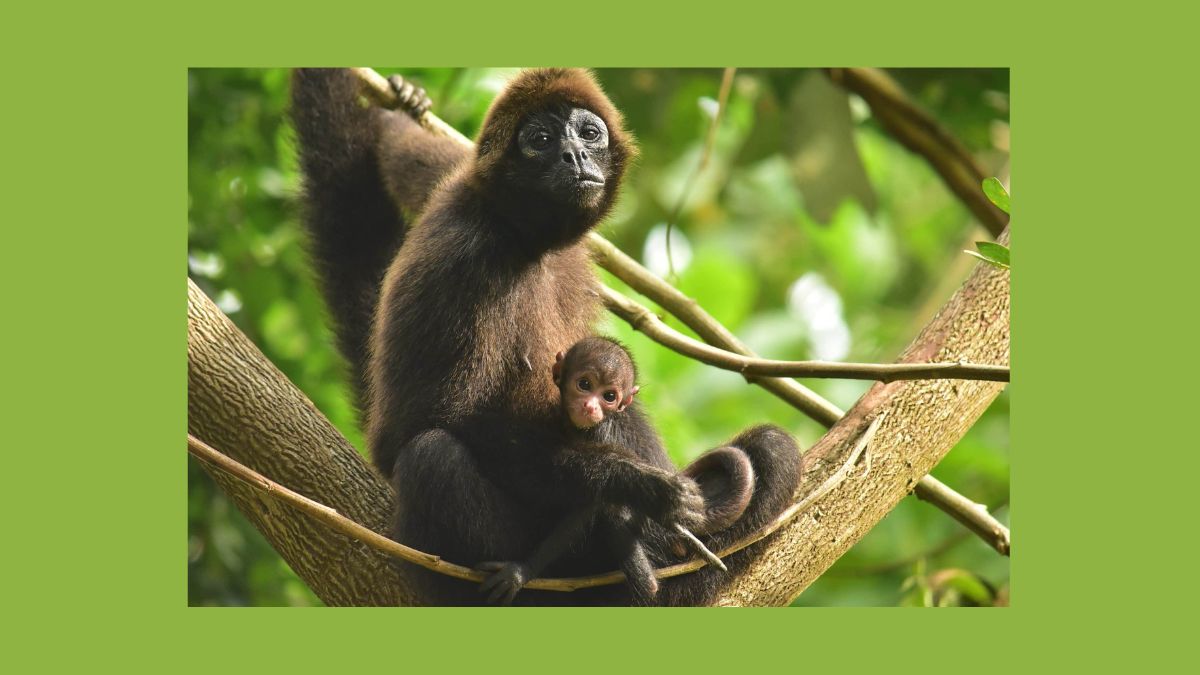ANIMALS
Tiger Fact Sheet Physical Characteristics and the Power Behind the Stripes

The tiger, a mesmerizing figure of strength and beauty, has captured the imaginations of humans for centuries. Known for their fierce roar and distinctive stripes, tigers are not just the largest cats in the world but also one of the most fascinating creatures to grace the Earth. But what makes the tiger so physically remarkable?
This in-depth exploration of tiger physical characteristics shows just how nature has engineered one of its most powerful predators. From its muscle-packed frame to its stealthy paws, the tiger’s anatomy is a masterclass in evolutionary design. Whether you’re a wildlife enthusiast or someone intrigued by this iconic big cat, read on to uncover details you never knew about the tiger’s physique.
Stripes That Tell a Story
The tiger’s stripes are more than just decorative; they are a signature feature, as unique as human fingerprints. With patterns varying across subspecies and even individual tigers, their stripes serve as camouflage, allowing them to blend effortlessly into their forested and grassland habitats.
Each stripe runs vertically along the body, helping break up their silhouette when sunlight filters through the trees. This natural disguise is essential for stalking prey in broad daylight. Additionally, the color combination of orange, black, and white creates contrasts that work surprisingly well even in dense vegetation or open spaces.
Scientists have noted that no two tigers have the same pattern, almost as if each tiger has its own ‘identity card’ in the wild. It’s not just fur deep either; the stripe patterns extend to their skin as well.
Size and Strength in Numbers
Tigers are the largest members of the cat family, with males significantly outweighing their female counterparts. On average, male tigers can reach a weight between 330 to 660 pounds (150 to 300 kilograms) and a length of up to 12 feet, including their tails. Females are slightly smaller but no less agile or capable.
Their massive size is not just for show; it’s all about raw power. A tiger can take down prey many times its size, from deer to even young elephants in some rare cases. Much of this strength is concentrated in their muscular build, particularly in their forelimbs, which allow them to deliver deadly blows and powerful strikes. Even their bite, estimated to exert a force of over 1,000 pounds per square inch, is ranked among the strongest in the animal kingdom.
This combination of size, power, and balance makes the tiger a top predator, one that needs no rival to hold its throne at the apex of the food chain.
The Coat That Protects
A tiger’s coat is not only beautiful but incredibly functional. Covered in dense, coarse fur, their coats provide insulation, which is vital for tigers living in colder climates like Siberia. The thick layer of fat beneath also contributes to retaining body heat during harsh winters.
Variations in color have also been observed among different subspecies of tigers. Bengal tigers, for example, tend to have an intense orange hue, while Siberian tigers exhibit a lighter golden coat that helps during snowy conditions. Even extremely rare white tigers are not albinos; their pale coloration is due to a genetic mutation known as leucism.
Coat maintenance plays a crucial role in a tiger’s life. Grooming not only keeps their fur in pristine condition but also spreads oils that act as a water-repellent. This natural adaptation proves helpful when tigers swim—yes, they are excellent swimmers!
Teeth Built for the Kill
When it comes to teeth, tigers are nothing short of extraordinary. With 30 teeth in total, their canines are the most impressive, growing up to 3 inches in length. These elongated teeth are perfect for gripping and tearing into prey.
Unlike most of us who rely on our teeth for varied activities, a tiger’s teeth are highly specialized tools. The sharp edges and robust design allow tigers to puncture thick hides and crack bones. Teeth wear and tear is natural, but they are designed to maintain efficiency throughout the tiger’s life.
Molars and premolars assist in slicing meat rather than chewing it. Tigers swallow chunks whole, letting their powerful digestive system do the rest of the work efficiently.
Ears That Track Everything
A tiger’s ears, small and rounded, play a surprisingly significant role in hunting. Capable of rotating up to 180 degrees, they help pinpoint sounds with remarkable accuracy. This acute hearing is crucial in detecting potential prey, even in pitch darkness.
The back of a tiger’s ears features a white spot known as an “ocelli.” These markings are thought to act as warning signs to other animals or even signal their cubs to follow them in tall grass.
While their ears may seem inconspicuous compared to their other physical traits, they offer a critical edge in the predatory world.
Leg and Paw Adaptations for Stealth
Tigers are built for stealth, and their legs and paws are proof of nature’s ingenuity. With muscular hind legs, they can leap distances of over 30 feet, an invaluable advantage during a chase. Those same strong limbs enable tigers to deliver lethal bites while pinning down their prey.
Their large paws feature retractable claws used for gripping and climbing. Soft pads on their feet ensure that tigers tread silently through their habitats, avoiding detection by even the wariest prey.
Additionally, their claws are sharp enough to cause fatal injuries and are constantly re-sharpened as they extend and retract.
Eyes for the Night
Often described as piercing and intense, a tiger’s eyes are well-suited for their predatory needs. Their bright, golden-yellow iris and black pupil combination isn’t just striking—it’s incredibly functional.
Tigers, like most cats, have excellent night vision, thanks to a reflective layer behind their retina called the tapetum lucidum. This adaptation enhances their visibility at night, granting them six times better vision than humans in low-light conditions.
Interestingly, white tigers often have blue eyes due to their genetic makeup. While this feature doesn’t affect their hunting abilities, it does make them a favorite among wildlife photographers.
Whiskers for Precision
Closely observing a tiger’s face, you’ll notice thick, white whiskers prominently. These tactile hairs, also known as vibrissae, are essential sensory tools.
Whiskers are deeply embedded in nerve endings, acting as extensions of the tiger’s spatial awareness. This trait helps detect obstacles and gauge the size of openings, particularly in dense forests.
During hunts, whiskers assist in determining the exact position of their prey, even when visibility is compromised.
Tail Balancing Acts
A tiger’s long, banded tail is not just aesthetically pleasing but serves a host of purposes. Primarily, it acts as a counterbalance, aiding in sharp turns during a chase. This ensures stability even at high speeds as they pursue prey.
Their tail also functions as a social signal within their species. A raised tail can indicate excitement, while quick flicks might suggest irritation. Cubs often use tails for playful interactions, adding valuable lessons for their survival.
At lengths of up to 3 feet, the tail is an extension of their adaptability in the wild, showcasing their evolutionary edge.
Why Physical Characteristics Matter
Understanding the tiger’s body highlights why this elusive predator is a symbol of raw power and elegance. Each bodily feature, from its formidable muscles to its developing colorations, serves a specific purpose in enabling its survival.
For wildlife enthusiasts, conservationists, or anyone wanting to learn about nature’s wonders, the tiger is a species that continues to awe and inspire humanity across the globe. Their physical traits are an enduring lesson in adaptation and resilience.
Embark on the Journey to Discover More
There’s infinite beauty in the details, and the tiger’s physical characteristics are a testament to nature’s brilliance. While their numbers dwindle due to habitat loss and poaching, understanding these magnificent creatures reminds us why their preservation is crucial.
Dive deeper into the world of tigers and learn more about what you can do to support conservation. From their mighty roars to their deft paws, tigers hold the power to connect us with nature’s grand design. Together, we can ensure their stories continue for future generations.
Conclusion
As we step back and reflect on the intricate adaptations of the majestic tiger, it becomes evident that each characteristic is a masterpiece of evolutionary design. These predators are not only icons of the wild but also vital components of ecological balance. It is our collective responsibility to ensure their survival, advocating for conservation efforts that promise a future where tigers roam freely in their natural habitats. By appreciating the unique attributes that make them such formidable hunters, we can foster a more profound respect for the natural world and strengthen our commitment to safeguarding its enduring wonders.

ANIMALS
Exploring the Enigmatic World of Horselloch: A Hidden Gem in Nature

Nestled away from the bustling crowds and well-trodden tourist trails lies a hidden gem known as Horselloch. This enchanting destination invites nature lovers, adventure seekers, and curious explorers alike to discover its serene landscapes and rich history. With lush greenery, sparkling water bodies, and an abundance of unique wildlife, Horselloch is a paradise waiting to be explored.
Imagine wandering through pristine forests where every rustle hints at secrets held within. Picture moments spent by tranquil streams that sing songs of ages past. Horselloch isn’t just another spot on the map; it’s a place where tranquility meets mystery. Whether you’re seeking relaxation or adventure, this secluded retreat offers something for everyone. So grab your backpacks—let’s embark on an unforgettable journey into the heart of Horselloch!
The Fascinating History of Horselloch
Horselloch is steeped in history, with tales that echo through its serene landscapes. This hidden gem has captivated adventurers and historians alike for centuries.
Originally inhabited by indigenous tribes, the area served as a vital resource for their way of life. They thrived on the rich biodiversity surrounding them, using local flora for food and medicine.
In later years, settlers arrived, drawn by the natural beauty and abundant wildlife. Their stories shaped Horselloch into a refuge where families built homes amid towering trees and sparkling streams.
The remnants of old structures can still be found along trails, whispering echoes of bygone eras. Each rock and pathway tells a story waiting to be uncovered.
Visitors today often marvel at how these historical elements coalesce with breathtaking scenery. It’s this blend that makes Horselloch not just another destination but a living testament to nature’s enduring legacy.
Unique Flora and Fauna in Horselloch
Horselloch is a treasure trove for nature enthusiasts, brimming with unique flora and fauna. The lush landscape offers a diverse range of plant species that thrive in its rich soil. From vibrant wildflowers to towering trees, the botanical variety captivates all who wander here.
Birdwatchers will be delighted by the array of avian life. Rare species flit through the canopy, their songs creating a symphony in the air. Keep an eye out for elusive creatures like deer or foxes, which roam freely among the underbrush.
The ecosystem here is carefully balanced, supporting various insects and small mammals that play vital roles in maintaining this natural harmony. Each season brings new colors and sounds to Horselloch, inviting visitors to return time and again to experience its ever-changing beauty. Exploring this enchanting environment feels like stepping into another world where nature reigns supreme.
Outdoor Activities in Horselloch
Horselloch is a paradise for outdoor enthusiasts. The stunning landscapes invite you to explore and enjoy various activities throughout the year.
Hiking trails wind through ancient forests, offering breathtaking views at every turn. Whether you’re an experienced trekker or just looking for a leisurely walk, there’s something for everyone.
Cycling paths are equally captivating. Riding through the lush greenery while soaking in the fresh air can be incredibly refreshing.
For those seeking adventure on water, kayaking along nearby rivers is exhilarating. Paddle your way through serene waters surrounded by nature’s beauty.
In winter, Horselloch transforms into a snowy wonderland perfect for snowshoeing and cross-country skiing. Imagine gliding over pristine white landscapes as snowflakes gently fall around you.
Wildlife watching adds another dimension to your outdoor experience here. Spotting rare birds and animals in their natural habitat makes every moment unforgettable.
Hidden Gems and Secret Trails
Horselloch is a treasure trove of hidden gems and secret trails waiting to be discovered. Venture off the beaten path, and you may stumble upon secluded glades that feel untouched by time.
Tucked away from the main routes, these undiscovered spots offer serene views and moments of solitude. The gentle rustling of leaves creates a symphony only nature can compose.
One trail leads you to an enchanting waterfall, where sunlight dances on cascading water. It’s an ideal spot for reflection or capturing stunning photographs.
Another lesser-known path takes hikers through ancient woodlands adorned with vibrant wildflowers in springtime. Each turn reveals new wonders—mushrooms sprouting from moss-covered logs or deer peeking curiously from behind trees.
Exploring these concealed corners adds a sense of adventure to any journey in Horselloch. Embrace the thrill of discovery as you create your own unique stories among nature’s secrets.
Local Culture and Cuisine
Horselloch boasts a rich tapestry of local culture that reflects its natural surroundings. The community thrives on traditions passed down through generations, each telling a unique story. Local festivals often celebrate the changing seasons, filled with vibrant music and dance.
Cuisine in Horselloch is an adventure for the taste buds. You’ll find cozy eateries serving hearty dishes made from locally sourced ingredients. Try the traditional stew—it’s a perfect blend of flavors that warms the soul.
Don’t forget to sample artisanal cheeses and freshly baked bread at village markets. The farmers take pride in their craft, offering visitors a glimpse into their lives through food.
Artisan crafts also play a significant role here. Handcrafted goods fill local shops, showcasing the talent and creativity of Horselloch’s residents while offering memorable souvenirs for travelers to cherish long after they leave this enchanting destination.
How to Plan a Trip to Horselloch
Planning a trip to Horselloch can be an exciting adventure. Start by determining the best time to visit. Spring and early autumn showcase the area’s beauty with vibrant flora.
Next, consider your mode of transport. Whether driving or taking public transit, ensure you have clear directions. GPS works wonders in this remote area but having a physical map can be helpful too.
Accommodation options range from cozy lodges to charming campsites nestled among nature. Booking in advance is wise, especially during peak seasons.
Create an itinerary that incorporates both popular sites and hidden gems within Horselloch. Don’t forget to allocate time for relaxation amidst your explorations.
Pack appropriately for outdoor activities—sturdy shoes are essential! Bring along essentials like water bottles and snacks to keep your energy up as you delve into this unique landscape.
Conclusion
As you explore the enchanting world of Horselloch, you’ll uncover layers of beauty and intrigue that make this destination truly special. From its rich history to the diverse ecosystems flourishing within its borders, there’s much to appreciate. The outdoor adventures available offer something for everyone, whether you’re seeking adrenaline-pumping activities or tranquil moments surrounded by nature.
Venturing off the beaten path reveals hidden trails and secret spots waiting to be discovered. These gems often provide a sense of solitude that can be hard to find in more popular destinations. Coupled with the warm hospitality and unique flavors found in local cuisine, your experience will feel both immersive and authentic.
Planning a trip to Horselloch is an exciting endeavor. With careful preparation, you can ensure that every moment spent there is memorable. Whether it’s your first visit or a return journey, Horselloch promises new experiences around every corner. This hidden gem beckons adventurers and nature lovers alike—an invitation too beautiful to resist.
ANIMALS
How to Choose the Right Consumer Research Firm for Your Business Needs

Understanding the Importance of Consumer Research
Understanding consumer preferences is crucial for business success in today’s competitive markets. Engaging a consumer research firm can provide essential insights into customer behavior, guiding strategic decisions and fostering growth. Partnering with a firm like The Benchmarking Company offers businesses access to detailed analytics tailored to industry-specific needs. These insights are invaluable in aligning products and services with customer expectations.
Consumer research not only helps companies understand market trends but also assists in identifying potential threats and opportunities. Companies that incorporate research findings into their strategies often find themselves ahead of the curve, able to anticipate changes and react swiftly to consumer demands.
Types of Consumer Research Services
Before choosing a research firm, it’s essential to understand their various services. Broadly, services can be classified into quantitative, qualitative, and mixed-method research. Quantitative research involves numerical data analysis, often used to identify patterns and make predictions. Qualitative research, on the other hand, provides deeper insights by exploring consumer attitudes and motivations through interviews and focus groups.
Mixed-method approaches combine these to provide a comprehensive view of consumer behaviors. Selecting the right type of service depends on your business objectives and the specific information you need to gather about your market.
Criteria for Selecting a Research Firm
Selecting the right consumer research firm involves considering several factors. First, assess whether the firm has expertise in your industry. This knowledge will enable them to design relevant research frameworks and accurately interpret results. Additionally, consider the firm’s flexibility in accommodating your specific research needs.
Another vital criterion is the firm’s methodology. Ensure they employ robust and ethical research methods. This diligence ensures the data collected is reliable and valid, forming a solid foundation for decision-making.
Evaluating Expertise and Track Record
A firm’s track record is a testament to its reliability and effectiveness. Look for case studies and testimonials that highlight past projects and successes. Proven success in similar projects can offer reassurance that the firm will meet your expectations. A well-regarded firm will have a portfolio of clients and a history of delivering actionable insights.
Delve into industry reviews and articles from credible sources to further validate the firm’s expertise. This stage is essential to making sure you work with a company that can guide your business toward wise strategic choices.
The Role of Technology in Modern Research
Technology has revolutionized consumer research by enabling data to be collected and analyzed on an unprecedented scale. Using AI, big data analytics, and automation tools has enhanced the accuracy and efficiency of research processes. Firms employing cutting-edge technology can offer faster turnaround times and more comprehensive insights.
Evaluating a firm’s technological capabilities is essential. Firms that leverage advanced tools provide innovative solutions such as real-time data analysis and predictive modeling, which can significantly enhance the strategic value of their insights.
Ethical Considerations in Research
Ethical practices in consumer research are non-negotiable. As data privacy concerns grow, any research firm you work with must adhere strictly to ethical guidelines and data protection regulations. This commitment ensures compliance and protects consumer trust and brand reputation.
Verify that the firm follows established ethical frameworks, such as obtaining informed consent from participants and ensuring data is collected and stored securely. This diligence can safeguard against legal repercussions and enhance public perception of your company.
Balancing Cost and Quality
While budgetary considerations are important, balancing cost with the quality of insights is critical. Cheaper services lack in-depth analysis or employ outdated methodologies, which could undermine the reliability of the data. Investing in a quality research firm can yield a high return on investment by providing actionable, data-driven insights.
Look for firms that offer flexible pricing models and transparent billing practices. These can help manage costs without compromising the quality of service. A clear understanding of what you’re paying for will ensure you receive value for money.
ANIMALS
Swinging Through the Canopy The Fascinating World of Spider Monkey

The lush rainforests of Central and South America are not only home to towering trees, vibrant flora, and exotic sounds but also some of nature’s most acrobatic and intelligent creatures. Meet the spider monkey, a charismatic species that captivates both scientists and wildlife enthusiasts alike with its extraordinary behavior, agile movements, and complex social structures. By exploring their history, types, and behaviors, we can better understand their incredible contributions to biodiversity and the challenges they face today.
Whether you’re intrigued by their unique adaptations or inspired by conservation efforts, this guide will take you through every dimension of the spider monkey’s world, from their ancient origins to their modern struggles.
A Brief History of Spider Monkeys
Spider monkeys belong to the New World monkey family and have an evolutionary history that goes back millions of years. These primates, scientifically known as Ateles, have distinctively long limbs and prehensile tails that enable them to thrive in their arboreal (tree-based) habitats.
Scientists believe that spider monkeys evolved in the dense forests of Central and South America as a response to the challenges posed by a life in the trees. Their agility and dexterity are thought to have emerged as survival strategies—ensuring safety from predators and access to food in high places. Early fossil evidence traces their lineage to other New World monkeys, illustrating an evolutionary victory in fully adapting to environments where climbing high and moving swiftly became essential.
Today, spider monkeys are considered some of the most acrobatic primates, showcasing behaviors that underline their rich evolutionary history.
Anatomy and Physical Adaptations
Spider monkeys are often referred to as the “”acrobats of the jungle.”” This nickname isn’t misplaced, as their unique anatomy has been finely tailored for life among the treetops.
Long Limbs for High Performance
With exceptionally long arms and legs, spider monkeys can effortlessly stretch, grip, and swing from branch to branch with minimal effort. This limb-to-body ratio enhances both their speed and their range of movement, making them one of the most agile New World monkeys.
The Powerful Prehensile Tail
The prehensile tail is perhaps the spider monkey’s most defining feature. Acting as a fifth limb, it provides balance, freedom of movement, and an extra grip for hanging on branches while foraging or interacting with their troop. Covered with a hairless, sensitive pad on its underside, the tail allows for precise tactile movements.
Sharp Vision and Intelligence
Spider monkeys possess excellent binocular vision, offering sharp depth perception—an essential trait for navigating complex treetop networks. Combined with their intelligence, these monkeys exhibit advanced problem-solving behaviors that are rarely seen in other animals.
Unique Behaviors in the Wild
Spider monkeys exhibit behaviors that highlight both social and survival instincts. Observing these animals in their natural habitat reveals fascinating aspects of their lives.
Diet and Foraging Techniques
Spider monkeys are frugivorous—meaning their diet largely consists of fruits. However, when fruits are scarce, they adapt by consuming leaves, seeds, and flowers. Their foraging behavior is keenly intelligent and often involves memorizing the locations of fruit-bearing trees within their range.
Swinging and Movement
The ability to swing effortlessly through the forest canopy, a behavior known as brachiation, is one of the spider monkey’s most recognizable traits. Their movements are not just a survival tool but also a mesmerizing sight that adds vibrancy to any ecosystem they inhabit.
Social Dynamics and Communication
Spider monkeys are social creatures, living in groups—or troops—of up to 30 members. Smaller sub-groups often form during foraging runs, showcasing a high degree of social organization. Communication within the troop occurs through vocalizations, body language, and even facial expressions, emphasizing their advanced social bonds.
Types of Spider Monkeys
Spider monkeys are divided into different species, each with unique traits and preferences.
Black-Handed Spider Monkey
Known for its unique coloring, the black-handed spider monkey (Ateles geoffroyi) is a common resident of Central American forests. Its agile movements and vocal nature make it highly noticeable in the wild.
Woolly Spider Monkey
Also called muriquis (Brachyteles), this type of spider monkey, found in Brazil, boasts calmer behavior and thrives in regions with minimal human interference. Woolly monkeys emphasize peaceful troop dynamics.
Brown Spider Monkey
This critically endangered species (Ateles hybridus) showcases the fragile state of some spider monkey populations. The brown spider monkey faces severe environmental threats, particularly deforestation and habitat destruction in northern South America.
Threats to Spider Monkey Populations
Despite their adaptability, spider monkeys face numerous threats due to human activity and environmental changes.
Habitat Destruction
Deforestation for agriculture, logging, and urbanization has led to rapid loss of spider monkey habitats. With fewer safe spaces to live and forage, populations are dwindling.
Hunting and Illegal Pet Trade
Spider monkeys are often hunted for their meat or captured for the illegal pet trade. These practices further reduce their already vulnerable numbers.
Climate Change
Shifts in weather patterns disrupt food availability and alter ecosystems, making it harder for spider monkey populations to stabilize.
Conservation Efforts to Save Spider Monkeys
Efforts to protect spider monkey populations involve multiple strategies, ranging from habitat conservation to public education campaigns.
Protected Areas and Reserves
Establishing wildlife reserves and enforcing anti-deforestation laws are critical components in preserving spider monkey habitats. Regions like the Amazon Rainforest and the forests of Central America play key roles in these initiatives.
Community Awareness Programs
Educating local communities about the importance of biodiversity—and their role in preserving it—is helping to curb illegal hunting and the pet trade.
Research and Monitoring
Scientists and conservationists continue to study spider monkey behavior to better understand their needs. Programs to track population health and habitat viability are ongoing in many regions.
Why Spider Monkeys Matter
The role of spider monkeys goes beyond their visual appeal—they’re vital for maintaining the health of their ecosystems. By dispersing seeds across vast areas, they promote forest regeneration and increase biodiversity. Their presence is also an indicator of healthy forest conditions.
Take Action for Spider Monkeys
Spider monkeys amaze us with their behavior, intelligence, and irresistible charm. However, their challenges remind us of the fragility of life within the natural world. Support conservation organizations, make mindful choices that reduce deforestation, and promote awareness of their plight.
Through collective action and individual efforts, we can ensure that future generations can continue to marvel at this incredible species. Remember, every small step contributes to the survival of these rainforest acrobats!
Conclusion
Spider monkeys are a testament to the intricate balance of nature, embodying the vibrant and complex ecosystems they inhabit. Their impressive adaptability and social structures reflect a sophisticated harmony with their environment. However, with their habitats under threat, these remarkable primates serve as a compelling reminder of the urgent need for conservation efforts. By protecting spider monkeys, we contribute to the preservation not only of a species but also of the vital ecosystems they maintain. It is incumbent upon us to act responsibly and advocate for sustainable practices that ensure their survival. Together, we have the power to shape a future where both humanity and wildlife thrive.
-

 BLOG1 year ago
BLOG1 year agoEscape to Tranquility Experience Grange Bardage Percheronne in Normandy
-

 LIFESTYLE1 year ago
LIFESTYLE1 year agoAir Jordan 1 Retro High Off-White University Blue
-

 SOCIAL MEDIA1 year ago
SOCIAL MEDIA1 year agoDecoding the Drive Social Media Pyramid Scheme Mystery
-

 LIFESTYLE1 year ago
LIFESTYLE1 year agoAir Jordan 4 Retro Metallic Purple
-

 BLOG7 months ago
BLOG7 months agoDecoding 540-315-8592: From Numbers to Messages
-

 HOW-TO GUIDES1 year ago
HOW-TO GUIDES1 year agoShop Smart and Save with Goldengatemax.shop Online Guide
-

 BUSINESS1 year ago
BUSINESS1 year agoDemystifying 315-442-5267 Common Myths and Facts Revealed
-

 LIFESTYLE1 year ago
LIFESTYLE1 year agoAir Force 1 Shadow Pistachio Frost